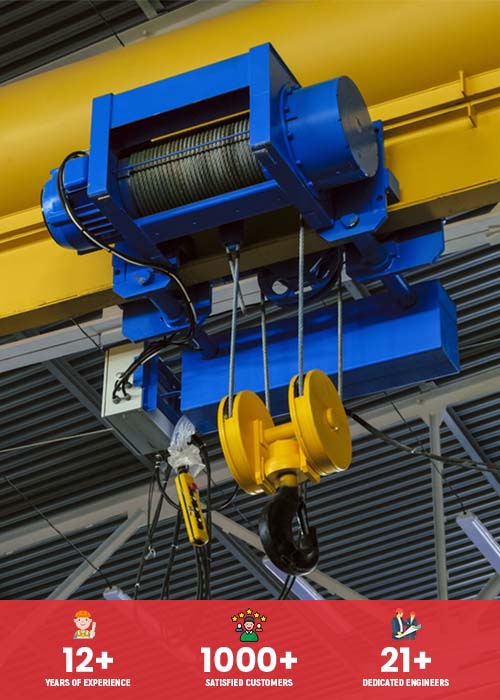5 Things to Take Care of While Using a Goods Lift for LongLasting Performance
Goods lifts are an essential part of warehouses, factories, retail outlets, and many other industries where heavy or bulky goods need to be moved between different floors. They help in saving time, reducing manual labor, and increasing operational efficiency. However, like any other machine, goods lifts require proper care and maintenance to ensure they deliver long-lasting performance. Many goods lift manufacturers in Ahmedabad design their lifts to be sturdy and durable, but the longevity of a lift largely depends on how it is used and maintained on a daily basis.
Whether you are buying a new lift or maintaining an existing one, choosing reputed goods lift manufacturers ensures that you start with a strong and durable product. Pairing quality manufacturing with proper care will give you the best return on your investment.
If you want your goods lifted to serve you efficiently for years, here are five important things to take care of while using it.
Follow the Weight Capacity Limits
Every goods lift comes with a clearly specified load capacity mentioned by the manufacturer. Overloading the lift beyond this limit can strain its motor, cables, and pulleys, leading to unnecessary wear and tear. In severe cases, it may even cause mechanical failure or safety hazards.
Best Practices:
- Always check the lift’s weight capacity before loading.
- Distribute the load evenly to prevent imbalance.
- Avoid repeated overloading, even if the lift can “handle it” occasionally as it shortens its lifespan.
By adhering to the recommended load limit, you prevent undue stress on the machinery and enhance its operational life.
Schedule Regular Maintenance and Inspection
A good lift may appear to be working perfectly on the outside, but mechanical components like cables, gears, and brakes may wear out over time. Regular maintenance helps detect minor issues before they become major problems.
Why it matters:
- Prevents unexpected breakdowns that can disrupt workflow.
- Ensures compliance with safety regulations.
- Reduces long term repair costs.
Tips:
- Make sure your lift is inspected by a certified technician at least once every three months.
- Replace worn out parts immediately to avoid further damage.
- Keep a maintenance log to track servicing history.
Train Staff on Proper Usage
One of the biggest reasons goods lifts break down prematurely is improper handling. When operators are not trained, they might mishandle controls, overload the lift, or fail to secure goods properly inside the lift. To keep the lift safe, make sure your operators are properly trained as a well-trained operator is the first line of defense against lift damage and accidents.
Training should include:
- Operating the lift using the control panel correctly.
- Loading and unloading procedures.
- Understanding safety protocols in case of a malfunction.
- Avoiding sudden stops and starts to reduce mechanical strain.
Keep the Lift Clean and Free from Debris
Over time, dust, grease, and debris can accumulate in the lift shaft and cabin, affecting the smooth operation of the lift. This is particularly common in industrial environments like factories and warehouses.
Importance of cleanliness:
- Prevents blockage in the lift mechanism.
- Reduces friction and wear on moving parts.
- Enhances hygiene, especially when the lift is used in food or pharmaceutical industries.
Cleaning tips:
Sweep and clean the lift floor regularly.
Ensure goods are free from loose debris before loading.
Schedule periodic deep cleaning of the shaft and internal components.
Address Issues Immediately
If your goods lift starts making unusual noises, experiences jerky movements, or takes longer than usual to operate, do not ignore these signs. These could be early warnings of a mechanical problem. Timely action can prevent small issues from escalating into costly repairs or dangerous failures.
What to do:
- Stop using the lift immediately and call for professional inspection.
- Do not attempt DIY repairs unless you are a qualified technician.
- Document the problem to help the technician diagnose it quickly.
Additional Tips for LongLasting Goods Lift Performance
Apart from the five main points, here are a few extra tips which can go a long way in keeping your lift in top condition.:
- Always use genuine spare parts recommended by the manufacturer.
- Ensure the lift has proper ventilation to prevent overheating.
- Protect electrical components from moisture.
Conclusion
A goods lift is a valuable investment that can significantly improve the efficiency of your operations. However, its performance and lifespan depend largely on how it is used and maintained. By following weight limits, scheduling regular maintenance, training staff, keeping the lift clean, and addressing problems immediately, you can ensure your goods lift serves you reliably for years.
For industries that rely on moving goods quickly and safely, a well-maintained goods lift is not just a convenience but a necessity. Treat it well, and it will reward you with longlasting, troublefree performance.




